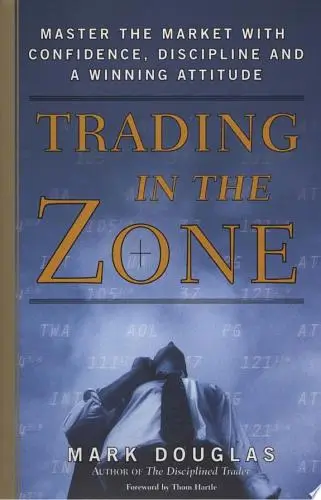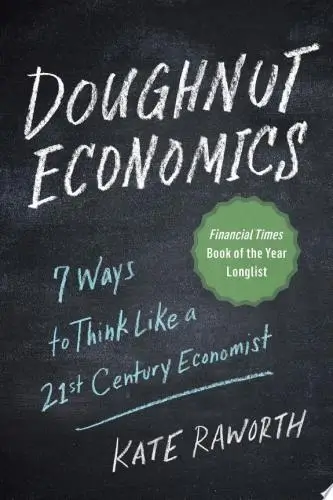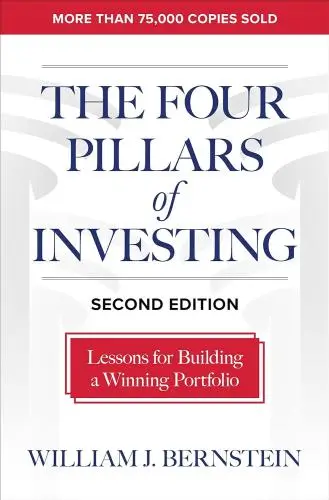The Four Pillars of Investing
Lessons for Building a Winning Portfolio
What's it about?
"The Four Pillars of Investing" by William J. Bernstein offers a foundational guide to understanding the complexities of the investment world. You'll delve into the essentials of theory, history, psychology, and the business of investing. Bernstein equips you with the knowledge to craft a robust investment strategy, emphasizing long-term success over short-term gains. Discover how to assess risk, allocate assets, and sidestep common psychological pitfalls, empowering you to make informed financial decisions with confidence.
About the Author
William J. Bernstein is an American financial theorist and neurologist known for his research in investment strategies and financial history. Author of several best-selling books, including "The Four Pillars of Investing," Bernstein's work combines empirical evidence with clear, insightful analysis, focusing on long-term investment success and historical financial trends.
10 Key Ideas of The Four Pillars of Investing
Understanding the Theory and History of Markets is Crucial for Investment Success
A deep understanding of financial history and the theory behind markets is essential for making informed investment decisions.
By studying past market behaviors, investors can identify patterns and trends that may influence future market movements.
This knowledge helps in constructing a diversified portfolio that can withstand market volatility.
Additionally, understanding the theoretical foundations of investing, such as the relationship between risk and return, enables investors to set realistic expectations and make decisions that align with their financial goals.
Learn DeeperStart with the basics: Begin by educating yourself on the fundamentals of financial markets and investment theory. This could mean reading books, taking online courses, or attending workshops focused on investing.
Analyze historical market trends: Look into historical data of stock market performances during different periods, especially during recessions and booms. Identify patterns that could inform your investment strategy.
Build a diversified portfolio: Based on your understanding of market theory and history, construct a portfolio that spreads out risk across different asset classes (stocks, bonds, real estate, etc.).
Set realistic expectations: Use your knowledge of risk and return to set achievable goals for your investments, keeping in mind that higher returns usually come with higher risk.
Keep learning: The financial world is always evolving. Stay informed about new theories, market trends, and historical insights by following reputable financial news sources and continuing your education.
- Example
If you're studying the Great Depression or the 2008 financial crisis, notice how certain types of investments behaved. For instance, stocks may have plummeted, but government bonds or gold might have held their value or even appreciated. Use this knowledge to balance your portfolio.
- Example
When learning about the Efficient Market Hypothesis, apply its principles by investing in index funds, which assume that it's hard to beat the market consistently through active management. This can be a practical step towards building a diversified, low-cost portfolio.
The Importance of Diversification in Reducing Risk
Diversification is a key strategy for managing investment risk.
By spreading investments across different asset classes, sectors, and geographical regions, investors can reduce the impact of a poor performance in any single investment on their overall portfolio.
This approach takes advantage of the fact that not all markets move in the same direction at the same time.
Diversification helps in smoothing out returns over time, making the investment journey less turbulent and more predictable.
Learn DeeperStart by assessing your current portfolio. Look at what you're invested in and see if your investments are concentrated in a particular sector or region. If so, consider how you might diversify to spread your risk.
Explore different asset classes. Don't just stick to stocks or bonds. Consider real estate, commodities, or even alternative investments like peer-to-peer lending as ways to diversify your portfolio.
Use mutual funds or ETFs for easy diversification. If picking individual stocks or assets seems daunting, look into mutual funds or exchange-traded funds (ETFs) that offer built-in diversification across various sectors or regions.
Regularly review and rebalance your portfolio. As markets move, your initial diversification can shift. Make it a habit to check your investments periodically and rebalance to maintain your desired level of diversification.
- Example
If you're heavily invested in technology stocks, consider adding investments in other sectors such as healthcare or consumer goods, or even in different asset classes like bonds or real estate investment trusts (REITs).
- Example
For someone with a portfolio of U.S.-based companies, adding international funds or ETFs can provide exposure to global markets, offering diversification beyond the domestic economy.
The Role of Asset Allocation in Determining Investment Returns
Asset allocation—the decision on how to divide investments among different asset categories such as stocks, bonds, and cash—is one of the most critical determinants of investment returns and risk level.
Different asset classes have varying levels of risk and return, so choosing the right mix can significantly impact an investor's portfolio performance.
Strategic asset allocation aligns with long-term financial goals, while tactical adjustments can be made to capitalize on short-term market opportunities.
Learn DeeperAssess your financial goals and risk tolerance: Before diving into asset allocation, take a moment to reflect on your long-term financial objectives and how much risk you're comfortable taking. Are you saving for retirement, a home, or your child's education? Your goals will shape your investment strategy.
Start with a basic asset allocation model: For beginners, a simple yet effective approach could be the 60/40 split—60% of your portfolio in stocks and 40% in bonds. This provides a balance between growth through stocks and stability through bonds.
Regularly review and rebalance your portfolio: Markets fluctuate, and so will the value of your investments. At least once a year, compare your current asset allocation to your target allocation. If it's drifted significantly, buy or sell assets to get back to your desired balance.
Consider using robo-advisors for automated asset allocation: If you're not confident in making these decisions yourself, many online platforms now offer automated investment services that can manage your asset allocation based on your risk tolerance and goals.
- Example
Imagine you're 30 years old, aiming for retirement at 65. Given the long time horizon, you might opt for a more aggressive allocation, like 70% stocks and 30% bonds, adjusting as you age to reduce risk.
- Example
If you're 50 and closer to retirement, you might prefer a conservative allocation, such as 50% stocks and 50% bonds, to protect against market volatility while still allowing for some growth.
Embracing a Long-Term Perspective to Overcome Market Volatility
Investing with a long-term perspective is crucial for navigating market volatility.
Short-term market fluctuations can be unsettling, but historical data shows that markets tend to increase in value over the long term.
Investors who maintain a long-term outlook are better positioned to ride out volatility and benefit from the compounding of returns.
This approach requires patience and discipline, resisting the urge to react impulsively to short-term market movements.
Learn DeeperStart with a solid plan: Before you invest a dime, have a clear understanding of your financial goals and the time frame you're working with. This will help you stay the course when the market gets rocky.
Diversify your investments: Don't put all your eggs in one basket. Spread your investments across different asset classes (stocks, bonds, real estate, etc.) to reduce risk and smooth out returns over time.
Automate your investments: Set up automatic contributions to your investment accounts. This not only enforces discipline but also allows you to benefit from dollar-cost averaging, buying more shares when prices are low and fewer when they're high.
Keep your emotions in check: Avoid making impulsive decisions based on short-term market movements. Remember, investing is a marathon, not a sprint. Stick to your plan unless your financial situation or goals change significantly.
Educate yourself continuously: The world of investing is always evolving. Stay informed about market trends and new investment strategies, but always weigh this information against your long-term investment plan.
- Example
Imagine you've decided to invest in a mix of stocks and bonds. When the stock market takes a dip, instead of selling off your stocks in a panic, you remember your long-term perspective and hold onto them, knowing that markets have historically rebounded over time.
- Example
You set up a monthly automatic transfer from your checking account to your diversified investment portfolio. Over the years, this disciplined approach helps you build a significant nest egg, demonstrating the power of compounding returns, even though the market had its ups and downs along the way.
The Impact of Costs on Investment Returns
Costs, including management fees, transaction fees, and taxes, can significantly erode investment returns over time.
Even small differences in fees can result in substantial differences in net returns when compounded over many years.
Investors should seek to minimize these costs by choosing low-cost investment options, such as index funds, and adopting tax-efficient investing strategies.
Being mindful of costs is an essential part of maximizing net investment returns.
Learn DeeperReview your current investments for any hidden or high fees. This could involve looking at the expense ratios of mutual funds or ETFs you own, and comparing them with lower-cost alternatives.
Consider switching to index funds if you're currently invested in actively managed funds. Index funds typically have lower management fees and can offer similar, if not better, returns over the long term.
Implement tax-efficient investing strategies, such as holding investments that generate significant taxable income (like bonds) in tax-advantaged accounts (like IRAs or 401(k)s), and keeping more tax-efficient investments (like stocks) in taxable accounts.
Regularly rebalance your portfolio using a buy-and-hold strategy to minimize transaction costs. Instead of frequently buying and selling assets, make adjustments to your portfolio at set intervals or when your financial goals change.
- Example
If you're currently paying a 1% management fee for an actively managed mutual fund, switching to an index fund with a 0.1% fee could save you nearly 90% in fees. Over 20 years, on a $10,000 investment, this difference alone could result in over $30,000 more in your pocket, assuming a 7% annual return.
- Example
By placing high-dividend stocks or real estate investment trusts (REITs) in your IRA and keeping growth stocks in your taxable brokerage account, you can take advantage of the tax-deferral on the IRA to minimize taxes on dividends and interest income, while benefiting from the lower capital gains tax rates on the growth stocks when you sell them.
Deeper knowledge. Personal growth. Unlocked.
Unlock this book's key ideas and 15M+ more. Learn with quick, impactful summaries.
Read Full SummarySign up and read for free!
The Four Pillars of Investing Summary: Common Questions
"The Four Pillars of Investing translates the complexities of investing into common sense principles, empowering individuals to build and protect their wealth intelligently." The book delves into the four pillars: theory, history, psychology, and business, providing a comprehensive understanding of the financial markets and how to navigate them successfully. Bernstein's insights on market behavior, asset allocation, and the importance of maintaining a long-term perspective offer valuable guidance for both novice and experienced investors.
I was particularly drawn to Bernstein's discussion on investor psychology and how emotions can often lead to poor decision-making in the financial realm. His emphasis on the historical performance of different asset classes was eye-opening and made me rethink my own investment strategy. While some sections were quite technical, Bernstein's clear explanations helped me grasp even the more complex concepts.
Overall, I highly recommend The Four Pillars of Investing to anyone looking to enhance their financial literacy and make informed investment decisions. It serves as a solid foundation for understanding the key principles of investing and is a must-read for those seeking to build a strong financial future.
Experience Personalized Book Summaries, Today!
Discover a new way to gain knowledge, and save time.
Sign up for our 7-day trial now.
No Credit Card Needed

Similar Books

The Art of Spending Money
Morgan Housel
Trading in the Zone
Mark Douglas
Doughnut Economics
Kate Raworth
A study guide for Barbara Ehrenreich's "Nickel and Dimed: On (Not) Getting By in America"
Gale, Cengage Learning
Bitcoin For Dummies
Prypto
Debt
David Graeber
The Barefoot Investor
Scott Pape
Money Has No Value
Samuel A. Chambers
Financial Peace
Dave Ramsey
Capital in the Twenty-First Century
Thomas PikettyTrending Summaries

Peak
Anders Ericsson
Never Split the Difference
Chris Voss
Smart Brevity
Jim VandeHei
The Psychology of Money
Morgan Housel
The First 90 Days
Michael D. Watkins
Atomic Habits
James Clear
Thinking, Fast and Slow
Daniel Kahneman
The Body Keeps the Score
Bessel van der Kolk M.D.
The Power of Regret
Daniel H. Pink
The Compound Effect
Darren HardyNew Books

The Art of Spending Money
Morgan Housel
$100M Offers
Alex Hormozi
A Candle for Kiri
Edna Mae Holm
Principles of Marketing, Global Edition
Gary Armstrong
Serpent Rising: The Kundalini Compendium
Neven Paar
Feeling Is the Secret
Neville Goddard
The 100 Best Business Books of All Time
Jack Covert
My Oxford Year
Julia Whelan
Trading in the Zone
Mark Douglas

